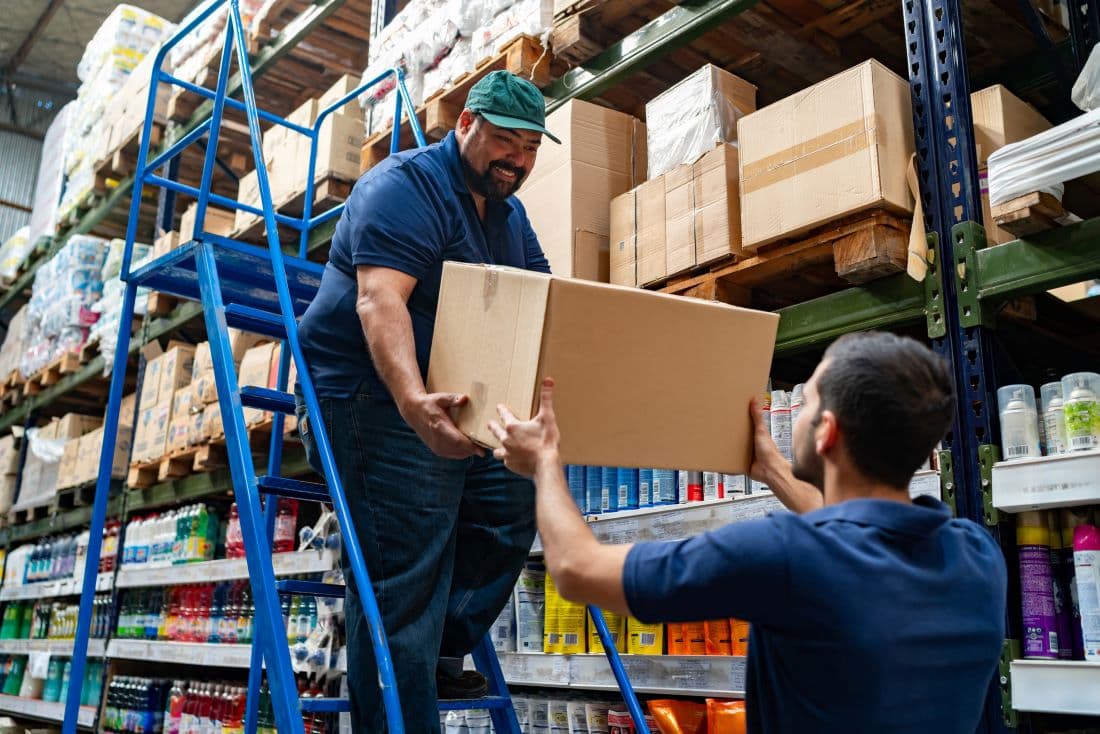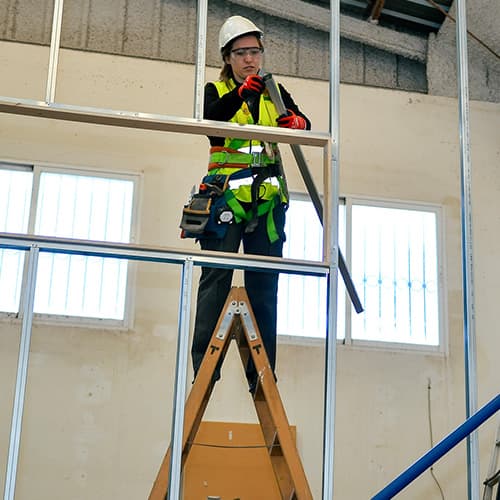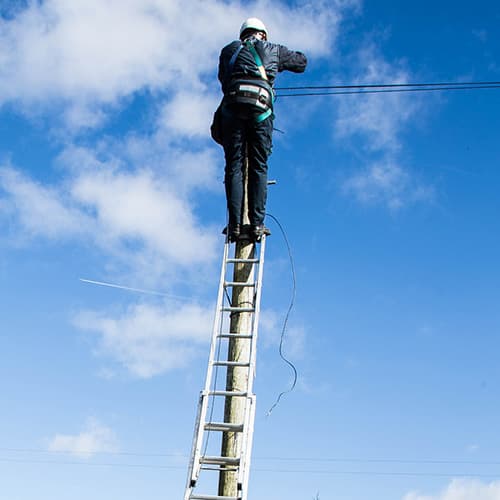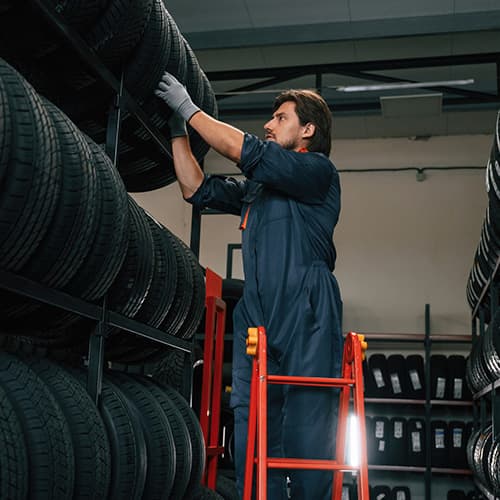March is National Ladder Safety Month. With fall protection and ladder safety violations consistently ranking among OSHA’s most frequently cited violations, it is imperative to make workplace ladder safety a top priority year round. According to the American Academy of Orthopedic Surgeons, 500,000 people were treated for ladder-related injuries in 2023 alone, with more than 22,000 of these incidents occurring in the U.S. annually. Tragically, hundreds of these injuries prove fatal. Livelihoods can be protected with some simple prevention by following OSHA’s three simple steps: plan, provide, and train.
Plan:
Ladder safety planning is your first step. Businesses must evaluate their current ladders, determine if they meet OSHA ladder regulations, and identify potential hazards before use. When inspecting your workplace ladders, consider the following:
- Suitability for the job: Is the ladder appropriate for its intended application?
- Load capacity: Does the ladder support the necessary weight, including workers and equipment?
- Height and stability: Does the ladder reach a safe height for the task without overextending?
- Structural integrity: Are there any splits, bends, missing parts, or structural damage?
- Surface contamination: Is the ladder free from grease, dirt, or other materials that could cause slips?
- Obstructions: Are paint, stickers, or other materials hiding potential defects?
If any of these inspections raise concerns, it’s time to replace the ladder with a safer option that meets OSHA ladder requirements.
Provide:

Choosing the right ladder is crucial for workplace safety. Global Industrial offers a wide selection of ladders tailored to specific industry needs, including:
- Manufacturing: Rolling ladders and crossover ladders for easy access to machinery and high work areas.
- Retail: Step ladders for safe product stocking and retrieval.
- Warehouse & Distribution: Configurable ladders and personnel lifts for high-shelf access.
- Public Sector: Extension ladders and safety cage ladders for facility maintenance and infrastructure work.
For assistance in selecting the right ladder, consult Global Industrial’s Ladder Buying Guide.
Best safety practices apply to all types of ladders, but there are certain ladders that present unique safety concerns. Most injuries happen on step ladders and extension ladders. Here are some best practices for optimum safety results:
Best Practices For Ladder Safety
Step Ladder Safety
- Ensure the spreader is fully locked into position before use.
- Use on a stable, level surface.
- Never stand above the permitted step.
Extension Ladder Safety
- Use only on stable ground; never place on boxes or other unstable bases.
- Never use an extension ladder horizontally as a platform.
- Follow the 4-to-1 rule: For every 4 feet of height, position the base 1 foot away from the wall.
- Implement ladder fall protection measures, such as securing the ladder base and using personal protective equipment when necessary.
Train:
Ladder safety training is vital for reducing injuries and improving workplace safety. Enrolling employees in a ladder safety course can ensure they understand best practices for safe ladder use. Here are some highlights on training your staff on inspection and safe ladder use:
Common Hazards to Look For:
- Damaged ladders: Check for defective rungs, feet, spreaders, and locking mechanisms.
- Unstable placement: Avoid placing ladders on slippery or uneven surfaces.
- Incorrect usage: Never exceed the weight limit, and do not stand on top steps.
- Electrical risks: Do not use metal ladders near power lines or exposed wiring.
- Unsafe work areas: Ensure ladders are not placed in high-traffic zones where they could be bumped.
Steps for Safe Ladder Use:
- Always maintain three points of contact when climbing (two hands and a foot, or two feet and a hand).
- Keep the ladder clean and free of slip hazards.
- Face the ladder when climbing up or down.
- Use barricades in high-traffic areas.
- Secure tools using a tool belt or hand line—never carry tools while climbing.
- Extend extension ladders at least three feet above the landing.
Unsafe Ladder Mistakes to Avoid:
- Do not exceed a ladder’s load capacity.
- Do not step on structural components not meant for weight support.
- Do not move a ladder while someone is on it.
- Do not use a stepladder as a makeshift platform.
- Do not tie two ladders together.
- Do not obscure safety markings with paint or stickers.
Also, OSHA regulations require that fixed ladders exceeding 24 feet must be equipped with a personal fall arrest system, ladder safety system, cage, or well. Compliance with these regulations is crucial in preventing serious workplace accidents.
Stay Safe with Global Industrial
By following OSHA’s three simple steps—Plan, Provide, and Train—you can create a safer work environment and reduce the risk of ladder-related injuries. Global Industrial offers an extensive range of ladders to meet industry-specific needs while ensuring compliance with OSHA ladder regulations.
For more information on selecting the right ladder for your workplace, visit Global Industrial’s Ladder Collection.
Stay safe. Stay compliant. Choose the right ladder for the job.
The information contained in this article is for informational, educational, and promotional purposes only and is based on information available as of the initial date of publication. It is the reader’s responsibility to ensure compliance with all applicable laws, rules, codes and regulations. If there is any question or doubt in regard to any element contained in this article, please consult a licensed professional. Under no circumstances will Global Industrial® be liable for any loss or damage caused by your reliance on this article.


